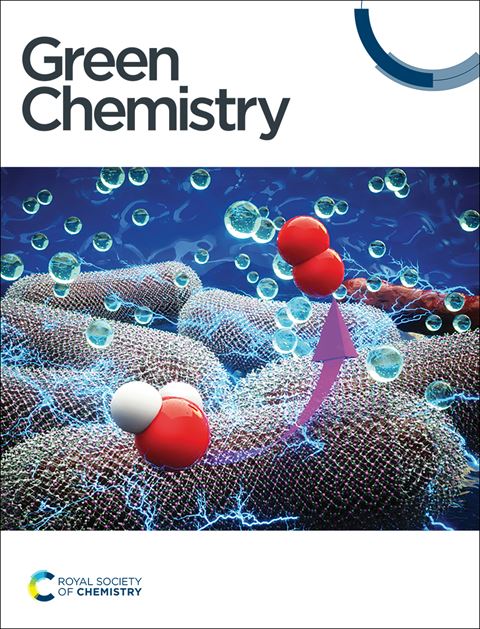A green and sustainable multi-enzyme cascade for the biosynthesis of 1,3-propanediamine from crude glycerol in vitro†
IF 9.2
1区 化学
Q1 CHEMISTRY, MULTIDISCIPLINARY
引用次数: 0
Abstract
1,3-Propanediamine is a widely used compound of the α,ω-diamines class. However, conventional synthetic methods for producing 1,3-propanediamine often contradict the principles of green chemistry due to their high energy consumption, numerous by-products, and significant waste pollution. In this study, we designed a new pathway to produce 1,3-propanediamine through a retrosynthetic-designed multi-enzyme cascade from glycerol in vitro. After completing the substrate preference modification of the rate-limiting enzyme glycerol dehydratase (KpGDHT) and optimizing the reaction conditions, the conversion efficiency using pure glycerol and crude glycerol as substrates reached 77% and 79%, respectively. Compared with the conventional methods, this multi-enzyme cascade is a simpler process, less energy-consuming and cleaner in terms of substrate usage. Given its robustness and environmental benefits, this proposed cascade reaction pathway has great potential to produce 1,3-propanediamine on an industrial scale.

一个绿色和可持续的多酶级联,用于从粗甘油中体外生物合成1,3-丙二胺
1,3-丙二胺是一种应用广泛的α,ω-二胺类化合物。然而,传统的生产1,3-丙二胺的合成方法由于其高能耗、大量的副产品和严重的废物污染,往往与绿色化学的原则相矛盾。在这项研究中,我们设计了一种新的途径,通过反合成设计的多酶级联,从甘油在体外生产1,3-丙二胺。对限速酶甘油脱水酶(KpGDHT)进行底物偏好改性并优化反应条件后,以纯甘油和粗甘油为底物的转化效率分别达到77%和79%。与传统方法相比,这种多酶级联反应过程更简单,能耗更低,在底物使用方面更清洁。考虑到其稳健性和环境效益,该级联反应途径在工业规模上生产1,3-丙二胺具有很大的潜力。
本文章由计算机程序翻译,如有差异,请以英文原文为准。
求助全文
约1分钟内获得全文
求助全文
来源期刊

Green Chemistry
化学-化学综合
CiteScore
16.10
自引率
7.10%
发文量
677
审稿时长
1.4 months
期刊介绍:
Green Chemistry is a journal that provides a unique forum for the publication of innovative research on the development of alternative green and sustainable technologies. The scope of Green Chemistry is based on the definition proposed by Anastas and Warner (Green Chemistry: Theory and Practice, P T Anastas and J C Warner, Oxford University Press, Oxford, 1998), which defines green chemistry as the utilisation of a set of principles that reduces or eliminates the use or generation of hazardous substances in the design, manufacture and application of chemical products. Green Chemistry aims to reduce the environmental impact of the chemical enterprise by developing a technology base that is inherently non-toxic to living things and the environment. The journal welcomes submissions on all aspects of research relating to this endeavor and publishes original and significant cutting-edge research that is likely to be of wide general appeal. For a work to be published, it must present a significant advance in green chemistry, including a comparison with existing methods and a demonstration of advantages over those methods.
 求助内容:
求助内容: 应助结果提醒方式:
应助结果提醒方式:


